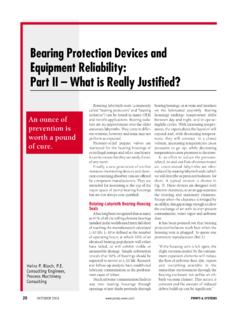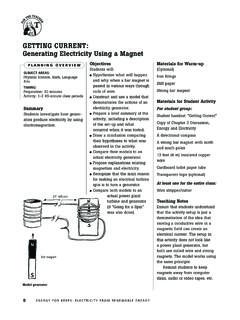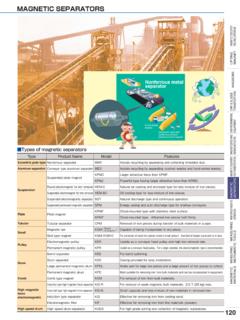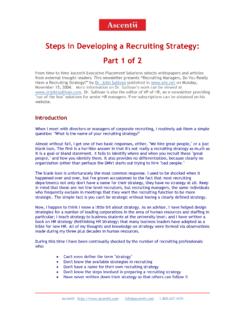Transcription of learner Book - mstworkbooks.co.za
1 Technologygrade 7 book 2cAPSlearner BookDeveloped and funded as an ongoing project by the Sasol Inzalo Foundation in partnership with the Ukuqonda by The Ukuqonda Institute9 Neale Street, Rietondale, 0084 Registered as a Title 21 company, registration number 2006/026363/08 Public Benefit Organisation, PBO Nr. 930035134 Website: published in 2014 2014. Copyright in the work is vested in the publisher. Copyright in the text remains vested in the contributors. ISBN: 978-1-920705-01-5 This book was developed with the participation of the Department of Basic Education of South Africa with funding from the Sasol Inzalo : Graham Barlow, Louis Botha, John de Klerk, Jacqui Greenop, Chris Human, Piet Human, Riekie Human, Xenia Kyriacou, Morne Labuschagne, John Laurie, Ezekiel Makwana, Rallai Maleka, Mafahle Mashegoana, Themba Mavuso, Peter Middleton, Lebogang Modisakwena, Peter Moodie, Neil Murtough, Sarah Niss, Humphrey Nkgogo, Phillip Radingoane, Jan Randewijk, Margot Roebert, Marlene Rousseau, Marcus Taba, Yvonne Thiebaut, Cecile Turley, Louis van Aswegen, Karen van Niekerk, Elene van Sandwyk, Hettie Vos, Magdaleen SnymanIllustrations and graphics.
2 Astrid Blumer (Happy Artworks Studio), Ian Greenop, Chris Human, Piet Human, Peter Middleton, Peter Moodie, Melany Pietersen (Happy Artworks Studio), Theo Sandrock, Lisa Steyn Illustration, Heine van As (Happy Artworks Studio), Leonora van Staden, Geoff WaltonCover illustration: Leonora van StadenPhotographs: Lenni de Koker, Ian Greenop, Chris Human, Tessa Olivier, Elsa Retief (GalleryProductions)Text design: Mike SchrammLayout and typesetting: Lebone Publishing ServicesThanks for free sharing of ideas, and free access to photographs, to: Thanks to people or institutions who placed photographs in the public domain on , with no attribution to people or institutions that placed photographs in the public domain on , with no attribution to Teravolt (2010), whose photo appears on page 2, for sharing that photo on under the Creative Commons Attribution Unported to Mark Heard (2010), whose photo appears on page 88, for sharing that photo on under the Creative Commons Attribution Generic to Mark Knobil (2005), whose photo appears on page 93, for sharing that photo on under the Creative Commons Attribution Generic to Denis Bastianelli, CIRAD, (2007)
3 , whose photo appears on page 99, for sharing that photo on under the Creative Commons Attribution Unported by [printer name and address]COPYRIGHT NOTICE Your freedom to legally copy this bookThis book is published under a Creative Commons Attribution-NonCommercial Unported Licence (CC BY-NC).You are allowed and encouraged to freely copy this book . You can photocopy, print and distribute it as often as you like. You may download it onto any electronic device, distribute it via email, and upload it to your website, at no charge. You may also adapt the text and illustrations, provided you acknowledge the copyright holders ( attribute the original work ).Restrictions: You may not make copies of this book for a profit-seeking purpose. This holds for printed, electronic and web-based copies of this book , and any part of this book . For more information about the Creative Commons Attribution-NonCommercial Unported (CC BY-NC ) licence, see of contentsTerm 3chapter 1:Magnetism.
4 1chapter 2:Investigation: Metals and magnetism .. 13chapter 3:Simple electric circuits .. 25chapter 4:Simple mechanisms combined .. 35chapter 5:Build a model crane .. 51 Term 4chapter 6:Emergency situations .. 83chapter 7:Processing food for emergency situations .. 93chapter 8:Making and evaluating emergency meals .. 105chapter 9:Protective clothing .. 115chapter 10: Mini-PATS helters for refugees .. 125 Chapter 1 Magnetism1 Technology gRADe 7 TeRM 3In this chapter, you will learn all about magnetism. You will investigate magnetic fields, and you will experiment to see which kinds of materials are magnetic. What is magnetism? .. Permanent magnets and magnetic fields .. Which substances will stick to a magnet ? ..11 Figure 1: The back of a speaker can be used to pick up certain items!TECHNOLOGY GRADE 7 TERM What is magnetism?
5 Some people use fridge magnets to keep notes or lists on the fridge s door. You even get magnets in the shape of words or letters that you can put on a fridge door to play with. The magnets make the letters stick to the metal of the fridge door. Can you think of other ways in which magnets can help us in our daily lives?In this chapter, you will learn about different types of magnets and how we use them in everyday of years ago, humans discovered that a certain type of rock could attract iron. This rock was called lodestone. People believed that it had magical powers! Pieces of lodestone would also push or pull other pieces of ability to attract iron is called magnetism. We now know that lodestone contains a material called magnetite, which is a kind of iron oxide. Iron oxides are chemical compounds of iron and oxygen. Lodestone is a natural magnet . All magnets are able to attract other magnets or magnetic objects.
6 Magnetic objects consist of iron or some other metals. Experiment with a magnet to pick up paperclips. You will notice that if you hold the magnet far away, nothing happens. If you move the magnet closer to the paperclips, the paperclips will suddenly stick to the about these questions: What is it about a magnet that attracts these particular objects? Does a magnet have to touch a magnetic object to attract it? To find out more about magnetism, do the following is a force that can attract (bring closer) or repel (push away) objects that have a magnetic material like iron inside 2: Lodestone attracts pieces of 1: mAgnETism3 Action researchYou need the following for this activity: a ruler, a paperclip, and at least three different kinds of magnets. Put the ruler flat on your desk. Place a paperclip so that it is in line with the zero mark of the ruler. Put one magnet at the other end of the ruler.
7 Slowly push the magnet toward the paperclip, as shown in the picture. The moment the paperclip moves towards the magnet , stop moving at the measurement on the ruler to see how far apart the magnet and paperclip were when they came together. Do this again with all of your magnets. 1. Fill in the table to show the distance at which each magnet attracted the from paperclipMagnet 1 magnet 2 magnet 3 magnet 4 Figure 3 TECHNOLOGY GRADE 7 TERM 342. Which magnet is the strongest?3. Which magnet is the weakest?What does this show us? A magnet has an invisible magnetic field around it. The field is stronger close to the magnet , and weaker further away. The magnet does not affect the paperclip until the paperclip is close enough to be within this field. Stronger magnets can attract magnetic materials from further away than weaker magnets can. This is because a stronger magnet has a larger magnetic field.
8 A few questions to answer1. Name three situations in which you have seen or used How would you find out if an object is magnetic or not?3. You have two magnets, one is magnet A, which can attract a paperclip from 10 cm away. The other magnet , magnet B, can attract a paperclip from 12 cm away. Which magnet is stronger? Explain your 1: mAgnETism54. Why can a magnet have an effect on a paperclip from a distance? Explain it in your own Permanent magnets and the magnetic fieldsYou have learnt that magnets can pull certain objects towards them because the objects have a magnetic field around them. An object that a magnet moves becomes a temporary magnet . A temporary magnet is not a magnet all the time. When you move the paperclip within the magnetic field of the magnet , the paperclip also becomes a magnet . The paperclip loses its magnetic field 4: The north pole of a magnet points to the Earth s magnetic north permanent magnet keeps its magnetic properties for a long time.
9 A temporary magnet acts as a magnet only as long as it is in the magnetic field of a permanent lodestone is a natural permanent magnet . You investigate permanent magnets that have been made artificially. These magnets have a north end and a south end, but they can come in different shapes. There are two basic shapes of magnets that you will use: bar magnets and horseshoe north pole of a magnet points to the Earth s magnetic north pole if it is allowed to swing freely on a GRADE 7 TERM 36 Figure 5: Bar magnetFigure 6: Horseshoe magnetBar magnets are rectangular, with a north pole on one end of the bar and a south pole on the opposite end of the bar. This means that the poles are far magnets also have a north and a south pole, but the bar has been bent into a curved shape. This bend brings the north and south poles closer together than they would be in a bar us investigate what the north and south poles of the magnet mean.
10 Investigating magnet polesFor this investigation, you will need two bar magnets, with the north and south poles marked. Work in small Hold a bar magnet in one hand and put another bar magnet on your desk. Bring the north end of the magnet in your hand close to the north end of the magnet on the desk. Write down what happens when you bring the north poles of the two bar magnets closer together. Figure 7 CHAPTER 1: mAgnETism72. Now bring the south pole of one of the bar magnets close to the south pole of the other bar magnet . Write down what happens when you bring the south poles of the two bar magnets closer together. 3. Now bring the north end of one bar magnet close to the south pole of the other bar magnet . Write down what happens when you bring the north pole close to the south pole. You should have noticed that as the north poles were brought together, there was a resistance to getting too close.







